-
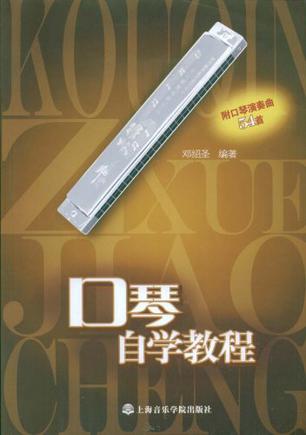
口琴自学教程
《口琴自学教程》作者:我自幼喜欢音乐,是由口琴引发的。刚开始时用口琴吹奏一些世界名曲,跟着买回来唱片欣赏,阅读有关音乐的书籍,参加音乐会听交响乐曲,中学时又跟一位在澳门绿邮电台当第一小提琴手的李先生学小提琴,对音乐的喜爱简直达到如痴如醉的地步,甚至平常走路时也在哼唱。那时喜欢的是西洋古典音乐,如贝多芬、莫扎特、柴可夫斯基……对外国名曲朗朗上。对外国名演奏家也很崇拜,对中国的音乐却是看不起的,觉得中国音乐落后,尤其是广东小调,认为是下里巴人,俗不可耐。 如今在加拿大生活了三十多年, 比以前在澳门、香港居住的时间还长,对中国音乐的感情也由此而改变了。尽管我还是那么喜欢西洋古典音乐,年年预订套票去听卡城爱乐乐团演奏交响乐。可奇怪的是,偶然吹吹口哨,不再是《蓝色多瑙河》,而是红线女的《昭君出塞》;晚上睡前听的并非《萧邦夜曲》,而是石叔诚弹奏的《平湖秋月》。家乡的旋律令我感到无比亲切、无限眷恋,这是文化的回归。少年时代听到的“下里巴人”在我脑里中再现,变成了“阳春白雪”,回味无穷。 -
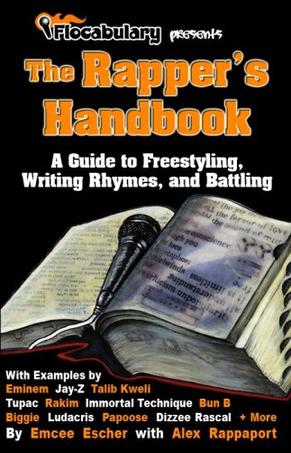
The Rapper's Handbook
-
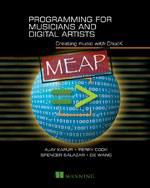
Programming for Musicians and Digital Artists
While many excellent tools exist for digital image creation and editing, similar tools for manipulating sound with precise timing and control are few and far between. ChucK, an audio-centric programming language, opens new vistas for sound artistry. The ChucK language provides precise high-level control over time, audio computation, and user interface elements like track pads and joysticks. Because ChucK uses the vocabulary of sound, it's easy to learn even for artists with little or no exposure to computer programming. Stable and reliable, ChucK powered the first SMule music apps and is the backbone of dozens of academic programs and laptop orchestras. This book is the first to systematically document and teach this powerful language. Programming for Muscians and Digital Artists: Creating Music with ChucK offers a complete introduction to programming in the open source music language ChucK. In it, you'll learn the basics of digital sound creation and manipulation while you discover the ChucK language. As you move example-by-example through this easy-to-follow book, you'll create meaningful and rewarding digital compositions and "instruments" that make sound and music in direct response to program logic, scores, gestures, and other systems connected via MIDI or the network. You'll also experience how the immediacy of ChucK programming enables the on-the-fly musical improvisation practiced by communities of "live music coders" around the world. -
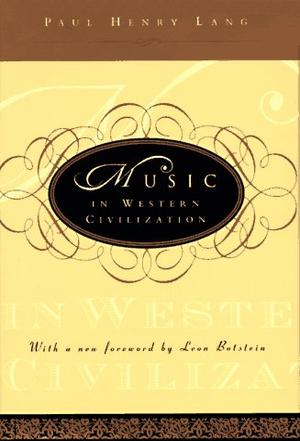
Music in Western Civilization
-
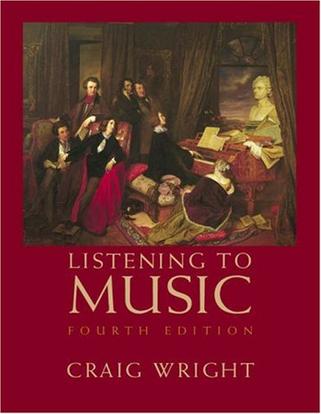
Listening to Music (with CD)
This chronological text, which covers all the major periods in music history, offers instructors and students particular help in developing listening skills in three ways: First, a free "Introduction to Listening" CD comes packaged with each student copy of the text. This CD plays all of the music discussed in the music fundamentals chapters of the text and provides an audio guide called "Instruments of the Orchestra." The guide presents the instruments and then tests students' ability to recognize them by themselves and in various combinations. Second, every chapter in Wright's text offers unique listening exercises. It is the only music appreciation book to have listening exercises built into and fully integrated with the text. Third, interactive listening guides and listening quizzes for all of the music in the text are available free via download from the Schirmer website. More than any other music appreciation text, LISTENING TO MUSIC challenges students to develop and refine their listening skills. Wright covers traditional Western music from medieval to modern, and integrates non-Western music throughout the text where appropriate, drawing comparisons between music of Western and other cultures. Concluding chapters discuss popular music and its impact on the world of music. Musical examples from each historical period are discussed within their social context, giving students a broad sense not only of a piece's composition, but also of its historical and cultural meaning. -
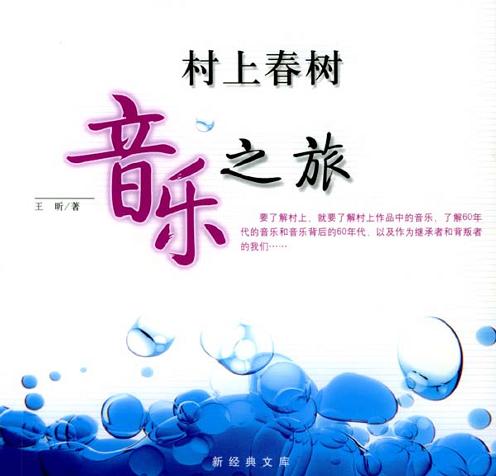
村上春树音乐之旅
本书是从音乐角度对日本著名作家村上春树的作品进行的一种解读。作者以村上的主要作品为线索,对其中提及的音乐类型、音乐人、音乐作品进行梳理,读者可以循着村上作品的发展变化,来感受音乐在村上的文学创作中的独特地位和重要作用。 本书所涉及的音乐类型主要有三类——摇滚乐、爵士乐和古典音乐,而且集中为20世纪60年代的音乐人及其代表作。贯穿所有这些音乐始终的主线,是60年代以来现代音乐的发展史,也是60年代青年的成长史。村上的成长历程与小说的年代变化,交错在音乐空间中,从而构成了音符荡漾的作品世界。